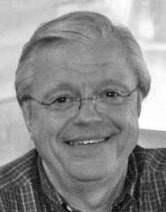“The bad news is time flies. The good news is you’re the pilot.”
— Michael Altshuler
“I’m having a hard time remembering names,” my friend said in frustration. “I can’t remember them like I used to.”
“I can relate,” I said. “Bad news is, it’s the massive amount of data buildup in our brains as the years fly by. The searches just take longer. The good news is it will come to you. It does for me. In an hour or two. Or a day … or so. Sometimes.”
“My frustration,” I continued, “is trying to remember where I put things. Like last week searching for a photo of an airplane I owned. I know I have it … somewhere. How do we accumulate so much stuff in one lifetime?”
That search did, however, turn up photos of other airplanes, and a name lost to memory: The Rev. Isaac Newton Burchinal Jr. and his World War II airplanes.
“Reverend who?” my friend inquired.
“Better known as ‘Junior’ Burchinal. His Flying Tiger Air Museum was a ‘less-than-museum- quality’ collection of WW II surplus airplanes at a small Northeast Texas crop-dusting strip west of Pari,” I said.
The rediscovered photos reminded me of the day he flew his B-17 bomber to the old Mount Pleasant airport in the mid-1970s.
While learning to fly, I visited the colorful aviator’s field where he flew his planes often for local shows, and as a movie pilot for Universal Studios in “The Great Waldo Pepper” and “Midway,” plus the television series, “Baa, Baa, Black Sheep.”
Not only were the planes fascinating, but I was in awe that anyone could fly the big warbirds off the small asphalt strip that ran uphill on one end with a fence and a highway on the other.
Burchinal’s Mount Pleasant visit was at an air show staged by our fledgling Mount Pleasant flying club, the Northeast Texas Aviation Association. I called him to inquire about what he would charge to fly a plane in our show.
To my delight, a deal was sealed; he was bringing his B-25 Mitchell bomber.
That was until the afternoon of the day before the show when he called me.
“Leon, this is Junior Burchinal up here in Paris. I’ve got bad news,” he said. “We’re having problems with the B-25. It won’t make the trip tomorrow.”
My heart began rapidly losing altitude. Visions of “what now” spiraled out of control.
“But, if it’s all right with you,” he added, “we’ll bring the B-17 for the same money.”
“All right,” I said with a stammer, my spirits pulling out of the dive. “Yessir, that is good news.”
He continued apologizing, almost as many times as I thanked him.
Early the next morning, as club members scurried about working on last-minute preparations, I heard the huge four-engine B-17 coming over downtown Mount Pleasant. Mesmerized by the sight and sounds, I watched it make a long, straight approach to the airport.
Just as wheels touched pavement, a WWII Corsair fighter made a highspeed pass over the airport before circling back to land.
Both planes taxied to the ramp. Burchinal climbed out of the single- seat fighter, followed by a young lady who appeared to literally unfold and crawl out of a small seat added behind the pilot. He introduced the bomber crew, then the young lady as his daughter, before apologizing again for not bringing the B-25.
“But I brought the Corsair to make up for it,” he said.
No one could have dreamed that day the B-25 that couldn’t make the show would find a home in Mount Pleasant decades later, stopping first at the Vintage Flying Museum at Meacham Field in Fort Worth for a few years.
And, I would have never imagined I saw it in Fort Worth years ago where I grabbed a fun photo of me in the pilot’s seat, only to duplicate that photo not long ago after it arrived at its Mid-America Flight Museum home. The good news last week was finding the photo of Burchinal’s airplanes and reminiscing with them. The bad news this week is that time still flies, and I’m still looking for that photo of my old airplane.
It’s hiding around here somewhere. I’ll find it. In a day … or two. Maybe.
Aldridge can be contacted at [email protected]. Other Aldridge columns appear on his blog site at leonaldridge. com.

.png)






